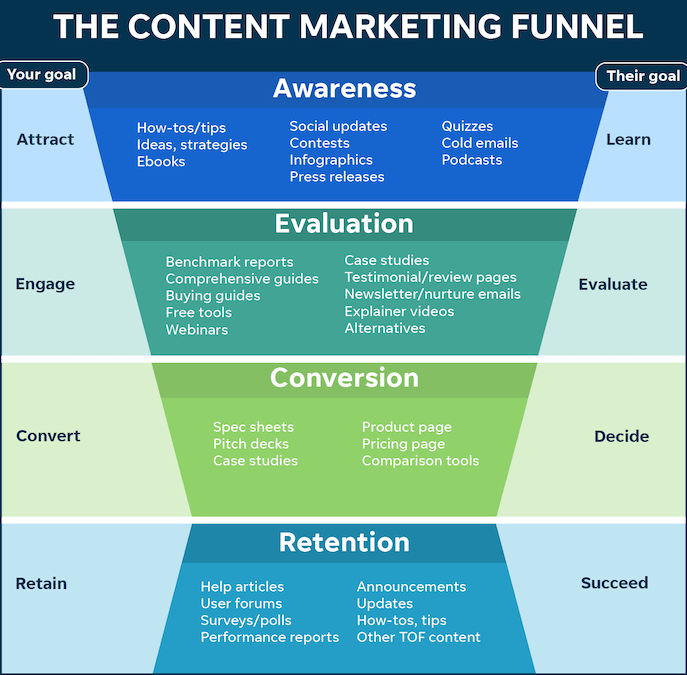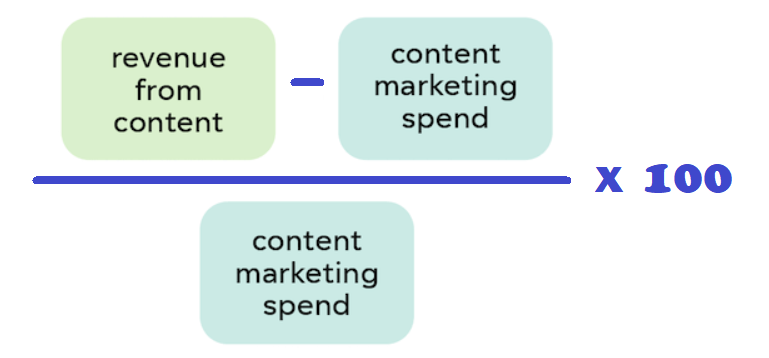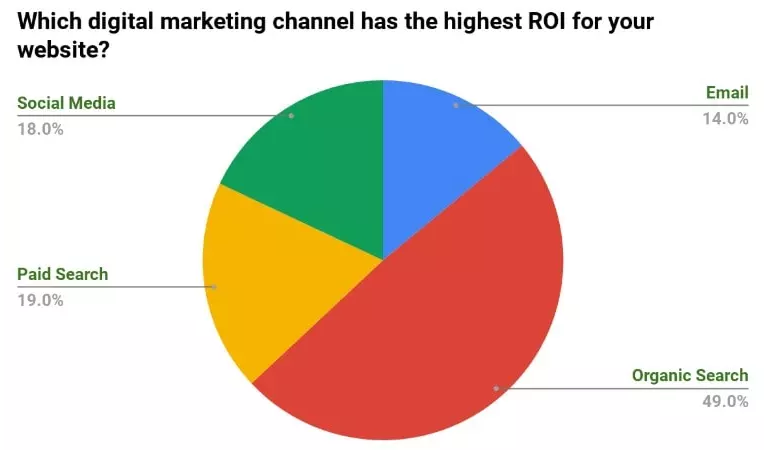When asked about the ROI of content, Gary Vaynerchuk once countered, “What is the ROI of your mother?”
That’s because content is not a product. It is not always a means to market or sell your product either. More often than not, content marketing is a way to build your brand, engage your audience, support your PR campaigns and make life easier for your customers.
Therefore, measuring the ROI of content marketing is a very complex task fraught with uncertainties. It is very difficult for decision makers in business to tie content marketing results to the bottom line or “revenue” of their organization.
In fact, a report by Parse.ly highlighted three significant findings:
- More businesses are creating more content, and spending more money than ever on content marketing.
- Content chiefly drives top-of-the-funnel activities.
- Nearly half of decision makers surveyed can’t say for sure how their content is performing and make key content decisions by gut feel.
So before you can attempt to define, derive or track the ROI of your content marketing, you have a long way to go!
What Are Your Content Marketing Goals?
Before you even think about getting ROI from content, you need to decide WHY you’re doing content marketing. Some organizations have multiple objectives and others have priorities for these objectives. Yours could be one or more of these:
 Image credit: Semrush
Image credit: Semrush
Once you know your goals, you plan the path towards achieving them – and the path your customers will take towards conversion.
The Content Marketing Funnel
A content funnel is the framework that describes the purchase journey a customer goes through when they consume a brand’s messaging – from becoming aware of the brand to actively advocating its products or services. The various stages within this journey are described by this figure:
 Image credit: WordStream
Image credit: WordStream
The key to a successful content marketing funnel is creating content that is tailored to potential customers at each stage and nudges them to move on to the next step. By providing valuable, useful and interesting content throughout the funnel, you can establish trust with potential customers and increase their likelihood of purchase.
Some best practices for setting up a content marketing funnel that maximizes ROI are:
- Define your target audience.
- Create buyer personas and ideal customer profiles (ICPs) with demographic information to help segment your audience, so that you can target them better.
- Create valuable, personalized content that resonates with them.
- Use a contemporary mix of content formats, such as blog posts, images, videos, webinars, and so on.
- Engage audiences on all platforms they frequent, not just your website.
- Optimize your content for the search engines. Organic SEO is the single biggest driver of web traffic to brands worldwide.
- Use valuable resources and studies that you create as lead magnets that you can offer to potential customers in exchange for their personal information. This will help you create personas as well as nurture leads throughout the funnel.
- Nurture your leads with email, social media, retargeting and other effective marketing and sales methods.
- Constantly track content metrics such as web traffic, time on site, email sign-ups and open rates, conversion rates, and so on and optimize your content for ROI accordingly.
Defining & Calculating Content Marketing ROI
Now that you have a clear, content-driven path for your customers to buy your products or services, you can begin to think about measuring content marketing ROI in the earnest.
The ROI of any business activity is calculated in percentage. The simple formula is:
(Profit / Cost) * 100
For content marketing, that would be…

Suppose your total investment in content marketing is $1,000 per month and the amount of revenue you attribute to content marketing is $1,500 per month.
That means your content marketing ROI is [($1,500 – $1,000) / $1,000] * 100 = 50%
A monthly ROI of 50% on any form of marketing is stupendous to say the least.
While the mathematical calculation of content marketing ROI looks simple, amassing the data and metrics is anything but. You need to undergo these critical steps:
- Calculate the cost of content creation.
- Calculate the cost of content distribution and promotion.
- Correctly attribute revenue to content marketing.
Each of these steps is an ongoing, complex task that calls for a high degree of competency in analytics, knowledge of different digital marketing channels and appropriate tools for tracking metrics.
Leveraging the Right Digital Channels
The three steps I describe above aren’t as mutually exclusive as they appear either. The costs and revenues of content creation, publishing and promotion depend on a variety of factors such as the length, format, the channel or media on which they’re published, and the rules set down by the owner of the platform. Further, you also need to measure subsidiary metrics such as reach, engagement and conversions for each channel.
SEO, email and social media are some of the most common – and effective – digital channels available for publishing as well as promoting your content. But which of them nets you the highest profits? Which one is good for other goals (revenue isn’t necessarily the only goal, remember?) such as brand awareness or customer engagement?
While the answer may vary for your brand, according to a survey by Search Engine Journal, most marketers agree that organic search brings the highest ROI for your content.
 Image credit: Search Engine Journal
Image credit: Search Engine Journal
The takeaway? Create and optimize your content for the search engines. That will likely get you the most engagement, leads and sales.
Always Measure Your ROI but Don’t Get Stuck on It
According to a HubSpot study, marketers who measured and reported their ROI were able to procure 1.6x higher budgets than their peers who didn’t. This stat alone should motivate you to proactively track the ROI of your content marketing.
Again, ROI is not the be-all, end-all of content marketing. Not long ago, Tim Suolo, CMO of Ahrefs, outlined 10 key advantages that content marketing brought to the company. However, he categorically declared that even if Ahrefs’ content operations didn’t bring them any ROI, he wouldn’t think about stopping them at all. That tells you what you need to hear!
https://twitter.com/timsoulo/status/1374243020594315271






